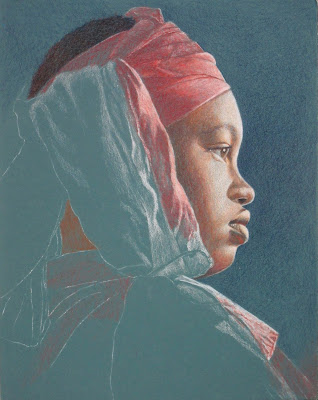| On the coffee press, after the white, I used cadmium orange hue over almost the entire thing (saved a little black) and canary yellow and scarlet lake in some areas. Then I reestablished some of the whites as well as the black (I used indigo and dark brown to make black or you can use black). For the wooden handle, after the white, I used dark brown and canary yellow with a little indigo for the dark side, I also used more white as needed. For the plate, after the white, I used true blue, canary yellow, and a little orange and scarlet lake as well as more white. I used indigo and orange in a few small dark places on the shadowed side of the plate (I used the same colors for the stack of plates). In the background, after the white, I added indigo blue very lightly. For the tablecloth, after the white, I used sienna brown (terra cotta would work too) and canary yellow and more white to creat some highlights. |






























